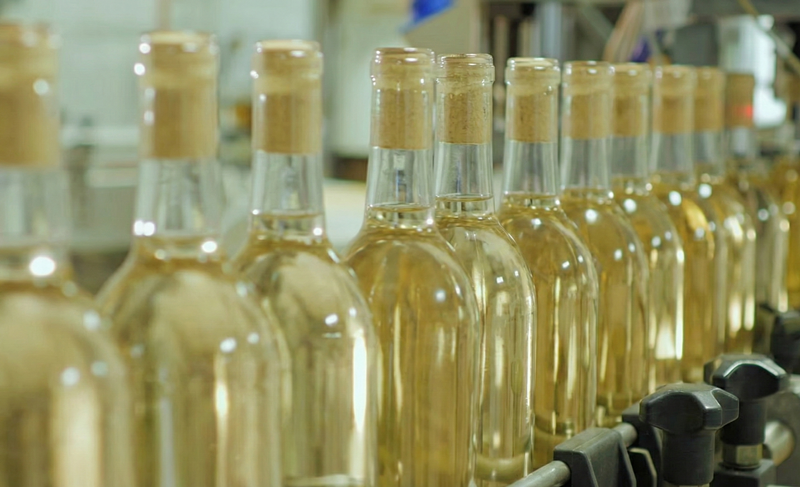Global Wine Industry Faces Turning Point as Consumption Falls and Premium Demand Rises
Global consumption drops to a six-decade low while revenues climb toward $413 billion by 2027
2025-11-24

The global wine sector enters 2025 in a period of transition marked by falling consumption, rising premium demand, and intensifying climate and trade pressures. According to the recent Moore Global Wine Report 2025, worldwide wine consumption fell to 214 million hectolitres in 2024, the lowest level recorded in six decades, as inflation, cost-of-living concerns, and changing lifestyle habits reshaped purchasing behavior . Yet the industry's revenue continues to grow. The report estimates global market value at $347.1 billion in 2025 and projects an increase to $412.9 billion by 2027, reflecting a clear shift from volume to value as consumers prioritize quality, sustainability, and authenticity over quantity .
Premiumization is becoming the dominant commercial trend. Producers are emphasizing limited-production wines, origin-focused stories, and craftsmanship to meet demand for higher-end labels. This movement is reinforced by the growth of natural, organic, and low-alcohol wines, which are gaining traction among younger and health-conscious consumers. The report notes the expanding appeal of natural wines made through spontaneous fermentation, low or no additives, and minimal intervention. Their rise is closely tied to a search for authenticity and terroir expression, influenced in part by renewed global interest in Georgia's ancient qvevri winemaking tradition, which dates back more than 8,000 years .
Sustainability has shifted from a niche principle to an industry-wide expectation. Producers are moving from standard organic and biodynamic practices toward regenerative viticulture that focuses on restoring soil health, biodiversity, and carbon capture. Water stewardship is also a priority in drought-prone regions, where wineries are investing in innovative irrigation systems and drought-resistant grape varieties. Across production and distribution, wineries are reducing their carbon footprint by adopting renewable energy, switching to lightweight packaging, and redesigning logistics. Certifications such as South Africa's WIETA and IPW and France's HVE are becoming vital tools for building consumer trust in competitive markets .
Emerging markets are reshaping the global map of wine consumption. Urbanization, rising incomes, and digital education are fueling interest in wine across Asia, Africa, and Latin America. India, Vietnam, South Korea, Kenya, Nigeria, Mexico, and Brazil are highlighted as expanding markets where younger consumers are adopting wine within lifestyle and dining culture. At the same time, producers facing climate volatility are turning to resilient native grape varieties. Southern Europe is reintroducing drought-tolerant local grapes, while regions such as Australia, California, and Portugal are planting Mediterranean varieties better suited to extreme heat. Eastern European and Balkan varieties including Fetească, Plavac Mali, and Kadarka are gaining new international attention and lending momentum to terroir-driven, regionally distinct styles .
Technology is becoming embedded across the value chain. The report describes widespread adoption of drones, remote sensors, AI-driven forecasting, and weather-based irrigation systems to manage vineyard conditions with greater precision. Producers in major regions, from South Africa to California, are using these tools to respond to climate challenges and improve yield and quality. On the business side, digital commerce and subscription models are expanding rapidly in the United States, United Kingdom, China, and Australia, allowing wineries to bypass intermediaries and personalize offerings. Blockchain systems are being tested in countries including France, Italy, and Japan to verify origin, combat counterfeiting, and support sustainability claims for export markets .
Trade policy has become a destabilizing force. In early 2025, the U.S. administration introduced broad tariffs on imported wines, including a 20% tariff on European Union wines and 10% on wines from Australia and New Zealand, disrupting established supply chains and raising prices for American consumers. The report notes that although some reciprocal tariffs were suspended in April 2025, wine was excluded and existing measures remain in place. Canada responded with its own retaliatory actions, affecting U.S. exporters through higher costs and delays. Legal challenges from U.S. states and industry groups have added uncertainty, complicating planning and capital investment. Excise tax regimes are also influencing product strategy, with countries such as the United States, United Kingdom, and Japan promoting low-alcohol styles through preferential tax rates .
Wine tourism continues to play a central role in brand building and regional development. Destinations including Bordeaux, Napa Valley, Tuscany, South Africa, Argentina, Georgia, and New Zealand attract visitors seeking immersive experiences that connect them directly with producers and local culture. Wineries are integrating hospitality, culinary partnerships, architecture, and design to reinforce regional identity and strengthen direct-to-consumer channels. Emerging regions are using festivals, routes, and agrotourism to expand visibility and economic impact. Virtual masterclasses and digital tastings, now common from Cape Town to Tokyo, are widening global access to education and wine appreciation .
The report also highlights increasing diversity and inclusion, with expanding representation from women, BIPOC professionals, and young entrepreneurs across winemaking, sommelier, and leadership roles. At the same time, emerging producers from Eastern Europe, South America, Sub-Saharan Africa, and Asia are earning international recognition and broadening the industry's geographic landscape. These shifts signal a move toward a more innovative and resilient global sector .
Together, the factors documented in the Moore Global Wine Report 2025 illustrate an industry redefining its priorities. As consumption declines and markets fragment, wine producers are leaning into sustainability, premiumization, technological modernization, diversified consumer geographies, and origin-driven identity to shape a more adaptable and competitive future.
| More information |
|---|
| (PDF)Moore Global Wine Report 2025 |
Founded in 2007, Vinetur® is a registered trademark of VGSC S.L. with a long history in the wine industry.
VGSC, S.L. with VAT number B70255591 is a spanish company legally registered in the Commercial Register of the city of Santiago de Compostela, with registration number: Bulletin 181, Reference 356049 in Volume 13, Page 107, Section 6, Sheet 45028, Entry 2.
Email: [email protected]
Headquarters and offices located in Vilagarcia de Arousa, Spain.